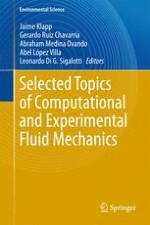This book contains invited lectures and selected contributions presented at the Enzo Levi and XIX Annual Meeting of the Fluid Dynamic Division of the Mexican Physical Society in 2013. It is aimed at fourth year undergraduate and graduate students, and scientists in the fields of physics, engineering and chemistry who are interested in fluid dynamics from an experimental and theoretical point of view. The invited lectures are introductory and avoid the use of complicated mathematics. The fluid dynamics applications include multiphase flow, convection, diffusion, heat transfer, rheology, granular material, viscous flow, porous media flow, geophysics and astrophysics. The material contained in the book includes recent advances in experimental and theoretical fluid dynamics and is suitable for both teaching and research.
